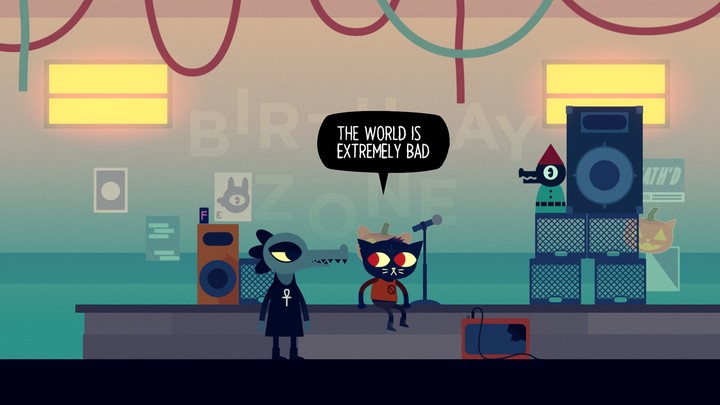Video Game Review: ‘Night in the Woods’

(Infinite Fall)
By Joshua Greenberg
March 11, 2017 4:32 p.m.
Mae is 20 years old. She just quit college and came back home in late autumn. She has depression. She’s also cat person, but that isn’t important.
Mae is the star of “Night in the Woods,” an adventure game released Feb. 21. In “Night in the Woods,” players run around Possum Springs, a small northeastern mining town, searching for the solution to an elusive and supernatural mystery. Although the storyline is short, the game has well-developed characters that engage players and an interesting story that evolves along with players’ choices.
Throughout the adventure, players must make important decisions that can result in different endings for the game. At certain points players can choose to hang out with one friend over another, forcing players to play through the whole game more than once to see every possible scene.
But “Night in the Woods” depends on mood more than anything. Other than a few minigames, there isn’t much to it beyond walking around and talking to people. As a result, the lack of interesting gameplay makes the game feel slightly small and cheap. There aren’t any monsters to fight, except in a game within a game on Mae’s computer.
However, the real and funny dialogue carries the project. Townsfolk talk in a naturalistic, charming way – full of pauses and “umms” that are displayed in little speech bubbles that read much like text messages.
Though players are dropped in Mae’s story after she’s already left college, the game introduces her problems gradually. Mae can’t hold her liquor, and she and her friends are tied down to a dying town they can’t escape. Mae’s life gives the game a compelling set of struggles that resonate with challenges a lot of millennials face.
Mae’s mental health is an important part of her story and is treated with care. As a result, her experience doesn’t feel exploitative or forced.
“Night in the Woods” also has a lot to say about bigger economic issues. In the background of Mae’s troubles are small towns that have suffered economic problems, such as job loss, making the game feel urgent and timely. The politics of Possum Springs are ultimately local, not national, though the virtual world may resonate with some left-leaning players.
“Night in the Woods” is full of small touches. Players keep track of things that happen in Mae’s journal, which is filled with drawings of where she’s been. It’s a nice way of following what’s happened in a game that depends on a series of partially disconnected vignettes and offers another glimpse into Mae’s mind.
However, despite a complex and entertaining dialogue, the game fails in its action elements. The platforming components, which players must face when exploring the rooftops of Possum Springs, require tricky and precisely timed jumps that don’t feel like they belong in such a story-focused game. While none of the jumps are particularly hard, they are annoying.
The game’s mystery elements are important to what “Night in the Woods” wants to convey, but ultimately don’t matter as much as the characters. The mystery serves more to establish frameworks for the relationships that Mae has with the people around her.
The game nails the overhanging, gloomy feeling of growing up during the Great Recession. Black humor and millennial anomie suffuses “Night in the Woods” with a relevance that many other games unsuccessfully try to achieve.

